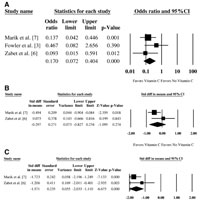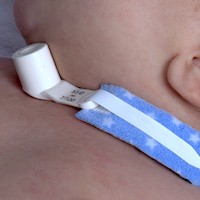Tag: trial

Early Identification of Patients at High Risk of Streptococcus-associated Necrotizing Infections
Two simple and available upon admission clinical predictors of group A streptococcus (GAS) documentation identified among a large cohort of surgically proven necrotizing soft tissue infections (NSTIs). The results show... read more

Tailoring Nutrition Therapy to Illness and Recovery
Without doubt, in medicine as in life, one size does not fit all. We do not administer the same drug or dose to every patient at all times, so why then would we live under the illusion that we should give the same nutrition... read more

Differential Gene Expression in Peripheral White Blood Cells with Permissive Underfeeding and Standard Feeding in Critically Ill Patients
The effect of short-term caloric restriction on gene expression in critically ill patients has not been studied. In this sub-study of the PermiT trial, we examined gene expression patterns in peripheral white blood cells... read more

Bougies for all intubations led to high success rates, even on difficult airways
In a randomized trial, the routine use of bougies on every DL intubation led to a higher rate of first-pass intubation success. And even allowing for the two-step technique (bougie insertion followed by ET tube insertion),... read more

Prehospital Rapid Sequence Intubation Improves Functional Outcome for Patients with Severe TBI
In adults with severe traumatic brain injury (TBI), prehospital rapid sequence intubation by paramedics increases the rate of favorable neurologic outcome at 6 months compared with intubation in the hospital. A total of... read more

The Fragility and Reliability of Conclusions of Anesthesia and Critical Care Randomized Trials With Statistically Significant Findings
Statistically significant results in anesthesia and critical care randomized controlled trials are often fragile, and study conclusions are frequently affected by spin. Routine calculation of the Fragility Index in medical... read more

Epidemiology of Pediatric Severe Sepsis in Main PICU Centers in Southwest China
This multicenter study demonstrates that pediatric severe sepsis is common and is a factor in the high mortality rate that is observed in PICUs in Southwest China. The mortality rate remains high; therefore, improved... read more

Newer Drug Fails Quick Prehospital Intubation
Among patients undergoing endotracheal intubation in an out-of-hospital emergency setting, rocuronium, compared with succinylcholine, failed to demonstrate noninferiority with regard to first-attempt intubation success rate. Among... read more

Failure of Non-invasive Ventilation in Patients with Acute Lung Injury
A high failure rate of the initial non-invasive positive pressure ventilation (NIPPV) therapy has been observed in medical critically ill patients with acute lung injury (ALI). Unless the underlying shock, metabolic acidosis... read more

Effect of Depth of Sedation in Older Patients Undergoing Hip Fracture Repair on Postoperative Delirium
In the primary analysis, limiting the level of sedation provided no significant benefit in reducing incident delirium. However, in a pre-specified subgroup analysis, lighter sedation levels benefitted reducing postoperative... read more

Evidence is stronger than you think: a meta-analysis of vitamin C use in patients with sepsis
Despite varying degrees of statistical significance between the original studies, this meta-analysis reveals a positive correlation between incorporating vitamin C in the treatment of sepsis and favorable patient outcomes,... read more

Update to the Vitamin C, Thiamine and Steroids in Sepsis (VICTAS) Protocol
The analyses described here are those necessary to answer the trial's primary question of whether combined treatment with vitamin C, thiamine and steroids is more effective than placebo in increasing days alive and free from... read more

Is Tranexamic Acid Going to CRASH the Management of TBI?
In the recent CRASH-3 randomized trial, early administration of tranexamic acid (TXA) was associated with a non-significant reduction of head injury-related 28-day mortality in patients with isolated traumatic brain injury... read more

Timing of Tracheostomy in Pediatric Patients
In children on mechanical ventilation, early tracheostomy may improve important medical outcomes. However, our data demonstrate the urgent need for high-quality, randomized controlled trials in the pediatric population. Data... read more








